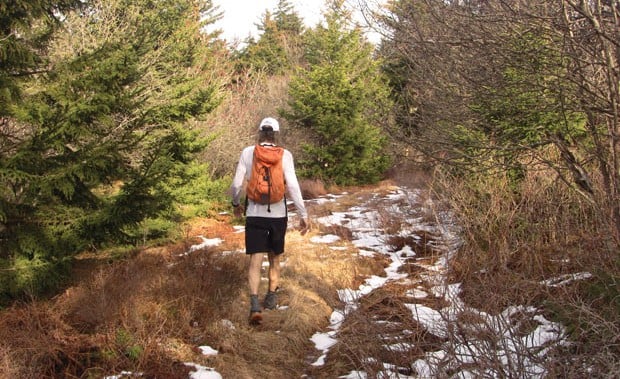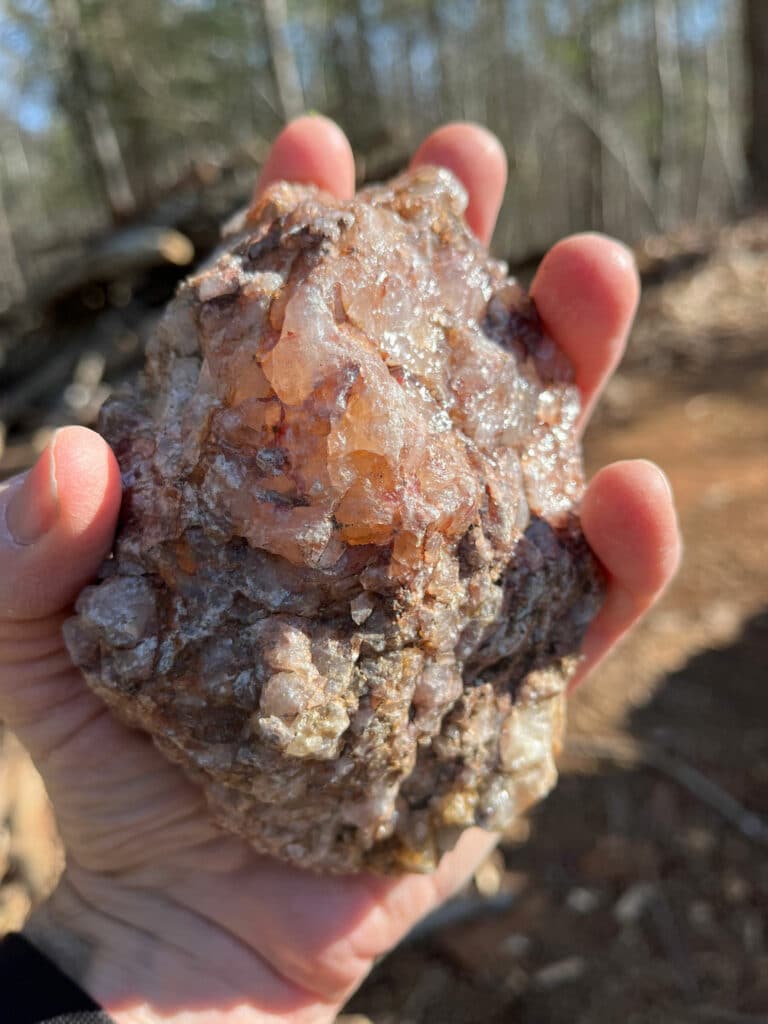Only 2.7 percent of the contiguous U.S. is protected as wilderness. East of the Missisippi, less than 1 percent is protected. Most Eastern wilderness is found along the Appalachian spine, and it includes some of the most dramatic and difficult trail runs. Here are some excellent wilderness areas that may inspire you to build your own wilderness runs.
Shining Rock Wilderness, N.C.
The Shining Rock Wilderness is one of the country’s most popular wilderness areas—and for good reasons: panoramic vistas from 6,000-foot balds; pristine creeks; Cold Mountain, made famous by the blockbuster book and movie; and the Shining Rocks themselves—stunning quartz outcroppings near 6,000 feet.
The best trail to run is the 31-mile Art Loeb Trail, which follows high-elevation ridgelines with jaw-dropping views and summits three peaks exceeding 6,000 feet. The Blue Ridge Parkway wraps around the southern and eastern borders of the wilderness, allowing easy access to many of the best areas.
Cohutta Wilderness, Ga.
The Cohutta Wilderness is home to the Cohutta Mountains, an extension of the Great Smoky Mountains. This is the second largest wilderness area in the region (only the Okefenokee Swamp is larger). Easy-access spots of the Cohutta can be crowded in the summer, like Jacks River Falls. But most of the area is rugged and remote, ideal for long trail runs. The Conasauga and Jacks River Trails offer an ideal summer trail run; both require dozens of wet-footed river crossings.
The Cohutta offers a full spectrum of color: the flowers of the flame azaleas, lady’s slippers, the blue cohoshes, and more than 100 species of birds. It also contains some of the state’s best trout rivers tumbling through rocky gorges. Furthermore, if you steer clear of the Jacks River Trail, you’re likely to find peace and quiet with very few people on your wilderness runs.
Joyce Kilmer-Slickrock Wilderness, N.C.
On the western edge of the Nantahala National Forest sits the 17,394-acre Joyce Kilmer-Slickrock Wilderness. There are some great views of the Cherokee and Nantahala National Forests from Hangover Bald and Stratton Bald, but the Joyce Kilmer Forest itself is the true running highlight. One of the oldest tracts of virgin old-growth forest in the East, the Joyce Kilmer Forest is home to massive yellow poplars 20 feet in circumference and over 100 feet tall, towering over a quiet, mossy forest floor loaded with wildflowers and ferns. Many of the trees in this section (including poplars, hemlock, red and white oak), are over 400 years old and are living proof of a history nearly forgotten. Run the two-mile memorial trail as a warmup, then follow the Naked Ground Trail deeper into the wilderness.
Ellicott Rock Wilderness, N.C.
The Ellicott Rock Wilderness spans over 8,000 acres and straddles the states of North Carolina, South Carolina, and Georgia. The landscape is wild and rugged, with tall peaks like Georgia’s 3,672-foot Glade Mountain or South Carolina’s 3,294-foot Fork Mountain. The best running trail is the Wild and Scenic Chattooga River Trail, which runs right through the middle of Ellicott Rock Wilderness. The Chattooga River Trail is roughly 40 miles of river-hugging beauty that runs along ridge lines, rapids, and deep coves that occupy a river that has remained protected and virtually unharmed by man. The Chattooga River Trail connects with the Bartram Trail a few miles below the wilderness, enabling you to expand your adventure into a multi-day epic. The wilderness protects the headwaters of the Chattooga, made famous by the 1970s book and movie Deliverance. Today, Deliverance River’s biggest threat isn’t squeal-like-a-pig backwoodsmen, but encroaching second-home development and runoff. Thankfully, the river is federally protected as Wild and Scenic, which prohibits development within its corridor.








